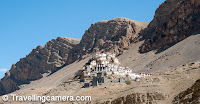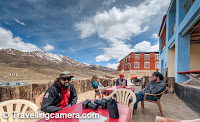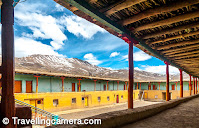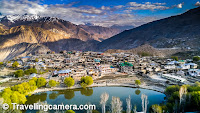Hadimba Temple, also known as the Dhungri Temple, is a famous Hindu temple located in Manali, Himachal Pradesh. Nestled among towering cedar trees in the Dhungri forest, this ancient shrine is dedicated to Goddess Hadimba, the wife of Bhima from the epic Mahabharata. Built by Maharaja Bahadur Singh in 1553, the temple is known for its unique Pagoda-style architecture and has become a popular spiritual and tourist destination.
Architecture and Design
The Hadimba Temple stands out for its four-tiered Pagoda roof and intricately carved wooden walls, showcasing traditional Himachali craftsmanship. The structure is made primarily of wood and stone, with exquisite carvings depicting various Hindu deities and mythological scenes. The temple’s sanctum sanctorum enshrines a footprint of the goddess on a stone, worshipped as Hadimba herself.
Key Features:
Pagoda Roofs: The layered wooden roofs add a distinct character to the temple.
Ornate Door Frame: The entry door is richly decorated with carvings of gods, goddesses, and animals.
Sanctum and Sacrificial Stone: The temple houses a stone believed to hold divine energy, and nearby, a sacrificial stone is used for rituals, especially during annual festivals.
Legends and Spiritual Significance
According to Hindu mythology, Goddess Hadimba, originally a demoness, took the form of a pious woman after marrying Bhima, one of the Pandavas. After Bhima and the Pandavas left, she meditated and gained divine status, earning reverence as a goddess by the locals. The temple is believed to be her abode, and local traditions emphasize her role as a protector.
Festivals and Rituals
The Hadimba Devi Fair, held in May, draws crowds from across the region to celebrate Goddess Hadimba’s spirit. Another significant event, Dussehra, is observed with unique rituals, where local deities are brought to the temple in a grand procession. These festivals showcase vibrant local customs, music, and dances, creating a lively cultural atmosphere.
Exploring the Dhungri Forest
The Hadimba Temple is surrounded by the Dhungri Van Vihar, a forest of tall cedar trees that enhances the temple's mystical ambiance. This serene forest area is perfect for leisurely walks, meditation, and photography, with stunning mountain views that add to the allure of the temple.
Nearby Attractions
Manu Temple: Dedicated to sage Manu, this temple is located a short distance from Hadimba Temple.
Vashisht Hot Springs: A natural hot spring popular among visitors seeking relaxation.
Old Manali: A quaint neighborhood known for its scenic cafes, trekking trails, and handicraft shops.
How to Reach Hadimba Temple
Hadimba Temple is easily accessible from Manali's main town center:
By Road: The temple is approximately 2 km from the Manali bus station, accessible by foot or auto-rickshaw.
By Air: The nearest airport is Bhuntar Airport, located about 50 km from Manali.
Best Time to Visit
While the temple is open year-round, summer (March to June) and autumn (September to November) are ideal for visiting, with pleasant weather that enhances the experience. Winter offers a picturesque view with snow-covered surroundings, adding a magical touch to the temple.
The Hadimba Temple is a unique blend of spirituality, history, and architectural beauty. Its sacred setting amidst the cedar forest makes it a must-visit destination for those seeking peace, spirituality, and a taste of Himachali heritage. Whether you're drawn by its mythological significance, stunning architecture, or the tranquility of Dhungri forest, Hadimba Temple promises an enriching experience in the heart of the Himalayas.
Related Blogposts :
 Langza Village - Popular place in Spiti Valley of Himachal Pradesh known for huge Buddha Statue at an altitude of 14,500 feet and spotting wild animals like Snow Leopards & Himalayan Ibex
Langza Village - Popular place in Spiti Valley of Himachal Pradesh known for huge Buddha Statue at an altitude of 14,500 feet and spotting wild animals like Snow Leopards & Himalayan Ibex


















.jpg)
Comments